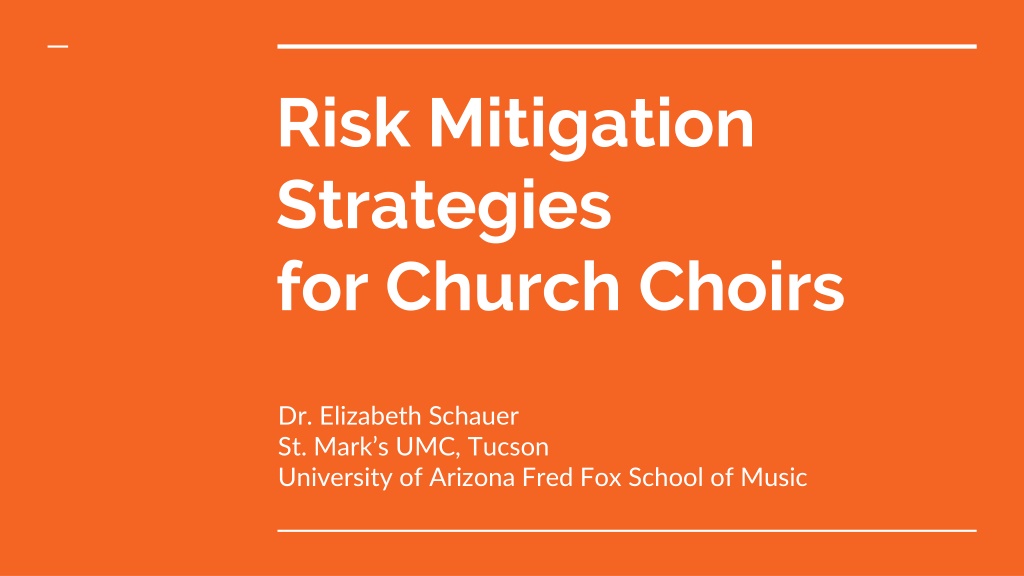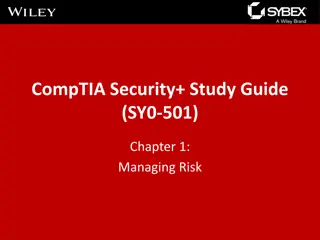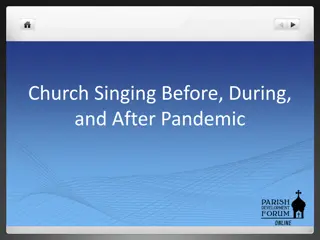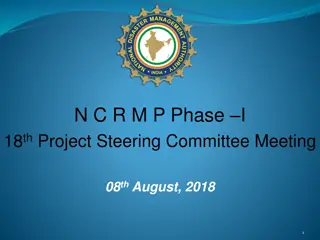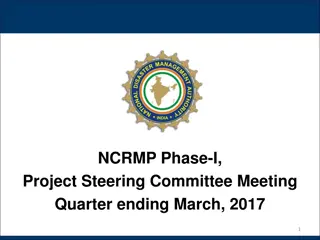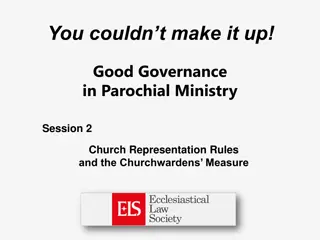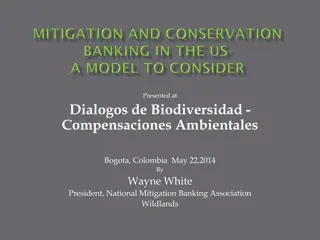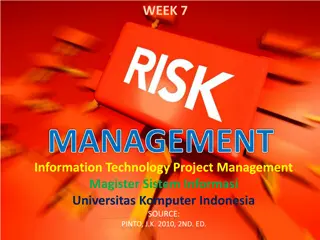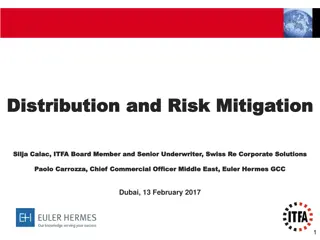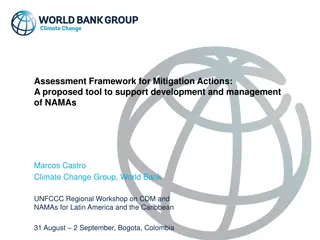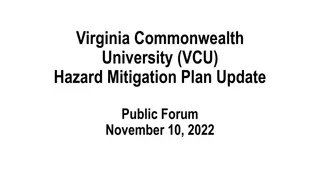Risk Mitigation Strategies for Church Choirs
The article discusses risk mitigation strategies for church choirs in the context of the COVID-19 pandemic. It highlights notable outbreaks related to choral singing, findings from studies on bioaerosol emissions, and the importance of prioritizing safety to prevent illness and casualties within choir communities. The content emphasizes the need for implementing protocols to reduce the spread of the virus via aerosols and droplets while acknowledging the challenges in returning to traditional choral singing practices.
Download Presentation

Please find below an Image/Link to download the presentation.
The content on the website is provided AS IS for your information and personal use only. It may not be sold, licensed, or shared on other websites without obtaining consent from the author.If you encounter any issues during the download, it is possible that the publisher has removed the file from their server.
You are allowed to download the files provided on this website for personal or commercial use, subject to the condition that they are used lawfully. All files are the property of their respective owners.
The content on the website is provided AS IS for your information and personal use only. It may not be sold, licensed, or shared on other websites without obtaining consent from the author.
E N D
Presentation Transcript
Risk Mitigation Strategies for Church Choirs Dr. Elizabeth Schauer St. Mark s UMC, Tucson University of Arizona Fred Fox School of Music
Initial Resources A Conversation: What Do Science and Data Say About the Near Term Future of Singing (May 2020) National Association of Teachers of Singing, American Choral Directors Association, Chorus America, Barbershop Harmony Society, and Performing Arts Medical Association https://www.youtube.com/watch?v=DFl3GsVzj6Q CIDRAP - Center for Infectious Disease Research and Policy University of Minnesota (ongoing) Dr. Michael Osterholm https://www.cidrap.umn.edu/
Notable Outbreaks Related to Choral Singing https://ncceh.ca/documents/evidence-review/covid-19-risks-and-precautions- choirs Skagit Valley Chorale, Mount Vernon, WA 61 people, 2.5 hour rehearsal: 32 confirmed, 20 probably secondary cases, 3 hospitalized, 2 died (March 2020) Amsterdam Mixed Choir, Netherlands 130 people; series of rehearsals and performance: 102 confirmed, one choir member and three partners died (February-March 2020) Berlin Cathedral Choir, Germany 80 people: 60 people became ill (no other details available) (March 2020)
Studies University of Colorado Boulder Specific, commissioned study related to various performance fields Results released in fall 2020, with implications for the various fields discussed in an accessible way; duplicated at U. of Maryland www.nfhs.org/articles/unprecedented-international-coalition-led-by- performing-arts-organizations-to-commission-covid-19-study/ Colorado State University Also supported by numerous performing arts organizations Results released in fall 2020 and continually updated, including with mitigation strategies. https://smtd.colostate.edu/reducing-bioaerosol-emissions-and-exposures-in- the-performing-arts/
What we learned: - - The virus is spread via aerosolized particles AND droplets Singing, humming, speaking (especially when projected) and playing wind instruments all generate aerosols Aerosols can travel a great distance and fans/HVAC systems can distribute them In addition to the virus making people severely ill now and/or being fatal, it can have negative long-term effects www.mayoclinic.org/diseases-conditions/coronavirus/in- depth/coronavirus-long-term-effects/art-20490351 There are risk mitigation protocols but until everyone can have the vaccine and/or effective treatment is available, we can t return to choral singing as we knew it before - - -
Priorities - Your number one priority is to ascertain that NO ONE gets sick or dies because of you, your leadership, your choices or your example. - Your number one priority is NOT to have choir again, or have choir in some particular configuration. This requires re- imagining what choir means. - Don t start meeting again until transmission is low and declining in your area and hospitals aren t at capacity
Risk Mitigation Factors - - - - - - - - - - Good air exchange rate (10-12 times per hour) Outside if possible Physical distance Well-fitting, surgical-style masks (not singers masks) Small groups Large space if inside Limited time (30 minutes) Limited contact of equipment/materials No plexiglass barriers No face shields (unless WITH mask)
Protocols - People in vulnerable populations should not attend www.cdc.gov/coronavirus/2019-ncov/need-extra-precautions/people- with-medical-conditions.html - People who have any symptoms associated with the virus or who have been around anyone who has symptoms should not attend (including temperature of over 100.4) www.cdc.gov/coronavirus/2019-ncov/symptoms- testing/symptoms.html - People who have tested positive or been around anyone who has tested positive should not attend - People who have traveled outside of your immediate area or state within the last two weeks should not attend
Protocols - Outside if possible - If inside then large space - sanctuary or concert hall - Singers screened before entering - Well-fitted masks that cover nose, mouth and chin AT ALL TIMES - 12 feet of distance between singers when singing - 6 feet of distance between everyone at all times - Small groups only
Protocols (continued) - 30 minutes max (don t come early, don t stay late) - Wait outside rehearsal space if early and depart immediately - Adjust musical expectations (plan for people to miss) - Get okay from all participants if any protocols change - Pre-set chairs 12 feet apart - singers from same household can sit together - Pre-set music, pencils, etc. so no passing out of materials
Screening All participants must agree to protocols before being allowed to attend Screening Questions - outside of rehearsal space, correct answers before being allowed to enter. If not, they must leave. 1) Did you take your temperature this morning? Yes Was it over 100.4? No 2) Have you traveled outside the state in the last 14 days? No 3) Have you tested positive or, to the best or your knowledge, have you come into contact with anyone who has tested positive for COVID-19 in the last 14 days? No 4) Have you had any symptoms or come into contact with anyone who has had any symptoms associated with COVID 19 in the last 14 days? (symptoms should be communicated in advance) No
St. Marks United Methodist Church - Based protocols on successful approaches with Columbus Gay Men s Chorus and University of Arizona choral groups that had already been meeting for over 2 months Told choir of available rehearsals and asked for people to let me know their availability after discouraging vulnerable people (thankfully most vulnerable people opted out) Selected 8 singers for each experience from those available Assigned door monitor to ask questions Rehearsed 15 minutes; recorded twice; stopped at 30 minutes Made sure distance was visible in videos to be a good model Experienced/tweaked video and audio approaches as needed - - - - - -
Video and Audio Recording Carolyn Yaussy Producer, On Air Promotions, AZ Public Media Any video/tech people should be included in the total person count. In our case, we happen to be in the choir but if we were not then the number of singers would be reduced. If you don't have access to video and audio equipment, cell phones will work. You should consider getting a small tripod for your phone.
It's best to have at least one other device recording audio. A second cell phone would work. However, if you don't have the ability to edit video and audio, use only one camera/cell phone. Setting up to record video will take a little time whether it's simple or complicated, and that should be factored into total time. If needed, video set up could be done ahead of time as long as there is no contact with singers or others, and teardown could be done after singers have left. Video: Fount of Every Blessing arr. L. Larson (simplified) Recorded 11-8-20 for online worship 11-22-20 https://drive.google.com/file/d/1j2gZad1gV9PyDLX9SfqSO-5DNXywXcdZ/view?usp=sharing
Cautions and Final Thoughts - These are risk mitigation approaches, there is no completely safe singing Use fool-proof communications (succinct and don t use links) It s hard to hear with masks and distance, accept this You have to be an enforcer of rules - take this seriously People seem to have the hardest time with not keeping 6 apart when visiting before and after Get USED to the protocols, don t get tired of them Care for those who can t come too - it s hard enough for everyone when no one can come back, but maybe even harder when some can and some can t - keep them connected - - - - - -
